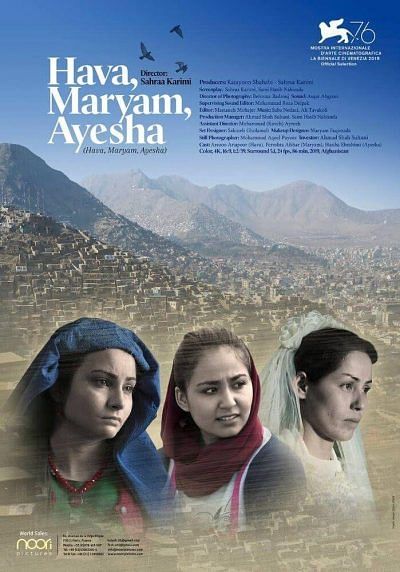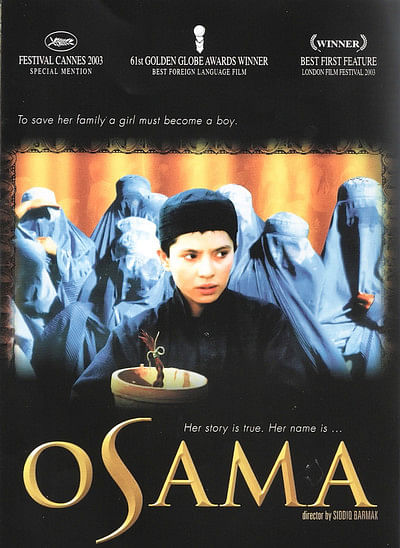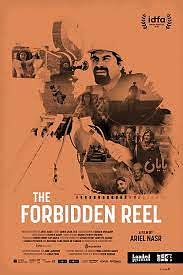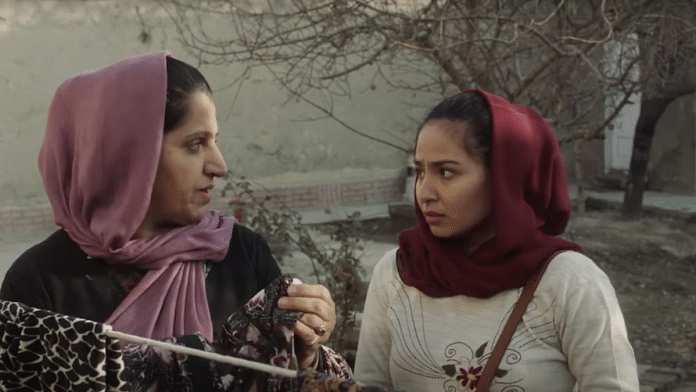When the Taliban first came in the 1990s, over 7,000 Afghan films were buried under the Afghanistan soil, in false ceilings, and behind brick walls. Habibullah Ali and his colleagues at the State-run Afghan Film company had worked tirelessly to preserve hours of motion picture. They were the ‘saviours of Afghan film history’. Now, as the Taliban reign Kabul again, the future of the film industry is at risk.
This is why the small street protests against the Taliban in the past few days is significant. Cultural freedoms are at risk too.
The Afghanistan film industry got a 20-year Taliban-free lease to tell its story. The year 2001 inaugurated a new era. Films were produced, women directors emerged, international film festivals were held. The world wasn’t just watching Afghanistan as a conflict-ridden country in shades of beige and ochre through Western lens and war films. Afghans produced movies like Kandahar (2001), Osama (2003), a Golden Globe winner, and Wajma (2013).
Now, filmmakers and actors fear the worst. The Taliban, among many other things, dislike movies. As the Taliban neared Kabul last week, Sahraa Karimi, director and current and first woman head of Afghan Film, wrote a letter to “All the #Film_Communities in The World and Who Loves Film and Cinema!”. She pleaded with the world to support her country, artists and filmmakers.
Karimi’s letter resonated with people across borders as the Hindi film fraternity, with Kabir Khan, Anurag Kashyap, Sonu Sood, Swara Bhasker and Shekhar Kapur expressing solidarity. Bollywood director Khan, who kick-started his career with Kabul Express in 2006, told Hindustan Times, “In the first avatar of Taliban in 1996 -2001, forget films, they did not even allow photography.”
Karimi has since escaped Kabul.
Hopefully, with the advent of YouTube and social media, Afghanistan will not have to bury its films in canisters again. We bring you four must-watch films — all made by Afghans.
Also read: ‘Lost and unable to locate US forces’ — How I made it out of Kabul
Not just US films
“You can’t win the trust of a country by invading it. You can’t build a nation at gunpoint,” said Sean Cullen, a fictional journalist based on the late Michael Hastings in the 2017 Netflix film War Machine.
Directed by Australian David Michod and starring American actors like Brad Pitt, War Machine is perhaps the best and most high-profile satirical skewering of the United States’ protracted military intervention in Afghanistan to have been released in the last five years.
But films like War Machine, The Breadwinner (based on the same premise as Afghan film Osama), Lone Survivor, and Kite Runner all have one thing in common: zero Afghans involved in writing, directing or producing them. It’s like if you judged Indian films by Slumdog Millionaire.
What you need to watch now
1. Hava, Maryam, Ayesha (2019)
 Sahraa Karimi’s last film, also a feature debut for the documentary filmmaker, is a wholesome representation of Afghan women in the 21st century. The film revolves around Hava, a married and pregnant woman caught in the prison of patriarchy, Maryam, a successful news anchor dealing with her cheating husband, and young Ayesha, who is expected to marry but is in love with someone else. The storylines of all three and their challenges echo with many women across countries, but what makes Karimi’s film unique is the varying complexities faced by an Afghan woman.
Sahraa Karimi’s last film, also a feature debut for the documentary filmmaker, is a wholesome representation of Afghan women in the 21st century. The film revolves around Hava, a married and pregnant woman caught in the prison of patriarchy, Maryam, a successful news anchor dealing with her cheating husband, and young Ayesha, who is expected to marry but is in love with someone else. The storylines of all three and their challenges echo with many women across countries, but what makes Karimi’s film unique is the varying complexities faced by an Afghan woman.
The film was the official Afghan entry for ‘best international feature film’ at the 2019 Oscars — no mean feat for Karimi.
Also read: Women in govt? Haha, say Taliban members in viral video from Vice documentary
2. Osama (2003)
 After Afghanistan fell to the Taliban in under 10 days, the Islamic terror outfit held a press conference where they said they will honour women’s rights but within ‘norms of Islamic law’. Siddiq Barmak’s first feature film Osama reflects something similar — using ‘respect’ for women as an excuse to put them through physical and psychological torture.
After Afghanistan fell to the Taliban in under 10 days, the Islamic terror outfit held a press conference where they said they will honour women’s rights but within ‘norms of Islamic law’. Siddiq Barmak’s first feature film Osama reflects something similar — using ‘respect’ for women as an excuse to put them through physical and psychological torture.
Osama is a story of a young girl (by the same name) and her family struggling to survive in Taliban-ruled Afghanistan without a man in the household. Since a girl/woman is not allowed to step outside the house, let alone work, without a man, young Osama cuts her hair and pretends to be a boy. It is not an easy watch, but it is an essential one. It is yet another reminder of why regional cinema is important — it understands nuances that outsiders don’t.
Barmak bagged the ‘best foreign language film’ at the 2004 Golden Globes for this brave film.
3. The Orphanage (2019), Wolf and Sheep (2016)
 At just 30, Shahrbanoo Sadat is arguably the most prolific and acclaimed Afghan director in the past five years.
At just 30, Shahrbanoo Sadat is arguably the most prolific and acclaimed Afghan director in the past five years.
Born in Tehran, Sadat is based in Kabul and, according to The Hollywood Reporter, has been trying to leave the country with her family after the city fell to the Taliban.
She made a splash on the global stage with her debut feature film, Wolf & Sheep, a Danish-Afghan co-production that won the Directors’ Fortnight at the 2016 Cannes Film Festival.
Set in rural Afghanistan, Wolf & Sheep appears part-documentary, part-drama, with Sadat often letting the visuals speak for themselves. It depicts the everyday lives of shepherds and their families.
Sadat’s 2019 film, The Orphanage, is a sequel to Wolf & Sheep and focuses on one of the original film’s child characters now living in Kabul. The film wears its Bollywood influences on its sleeve, albeit “clumsily” at times, according to Variety’s Jay Weissberg.
Also read: 24-year-old Afghan, a Delhi graduate, is behind the Kabul women protests against Taliban
4. The Forbidden Reel (2019)
 Written and directed by Afghan-Canadian documentary filmmaker Ariel Nasr, The Forbidden Reel is perhaps the most sobering of this cinematic selection due to its real-life subject matter.
Written and directed by Afghan-Canadian documentary filmmaker Ariel Nasr, The Forbidden Reel is perhaps the most sobering of this cinematic selection due to its real-life subject matter.
This documentary is a collection of interviews of stalwart Afghan directors, producers, and crew members.
With the help of the Afghan Film archive, Nasr shows how the Afghan film industry was kept alive by its members during the first Taliban rule, who attempted to censor and burn down film archives every step of the way.
With the return of the Taliban, one cannot help but wonder whether Nasr will need to make a sequel to it. It depends on if the new government is as adversarial to Afghan cinema as the last.
Views are personal.
(Edited by Neera Majumdar)



